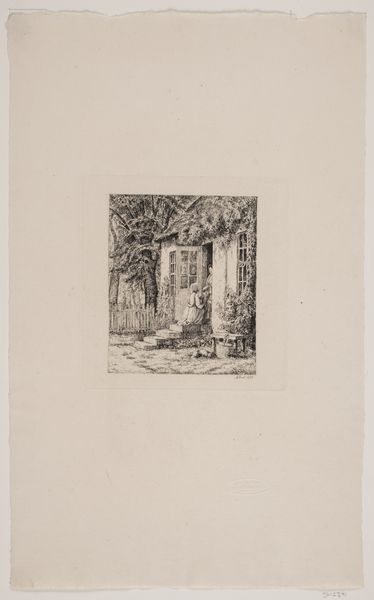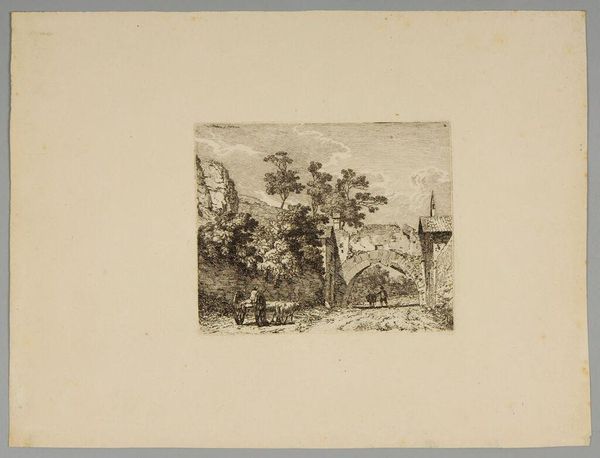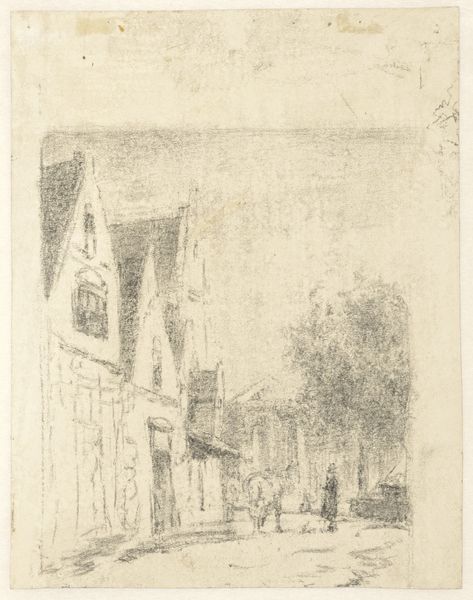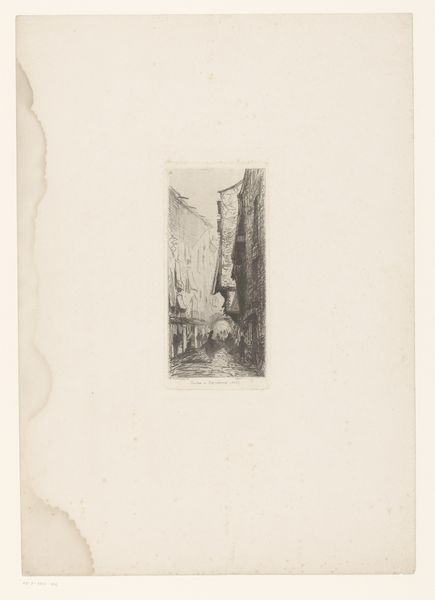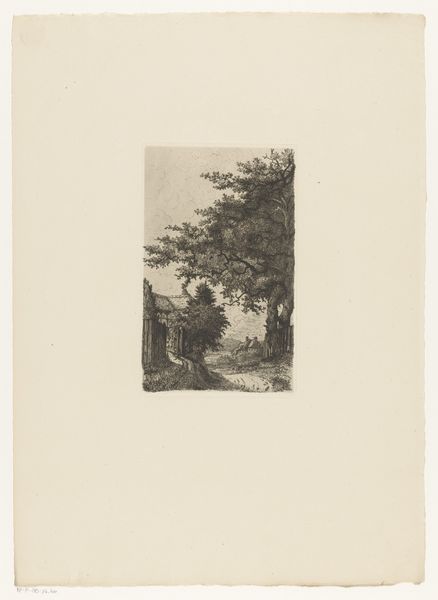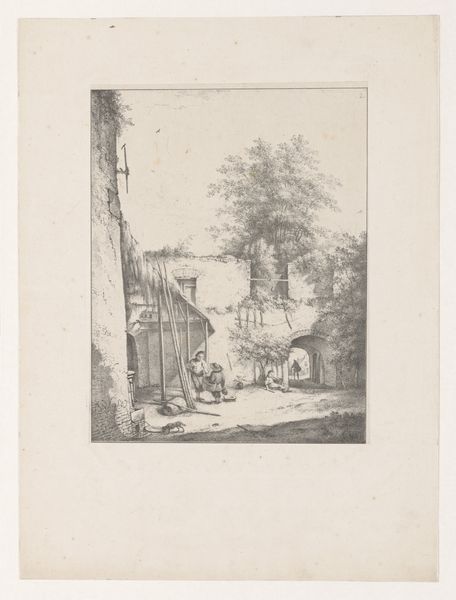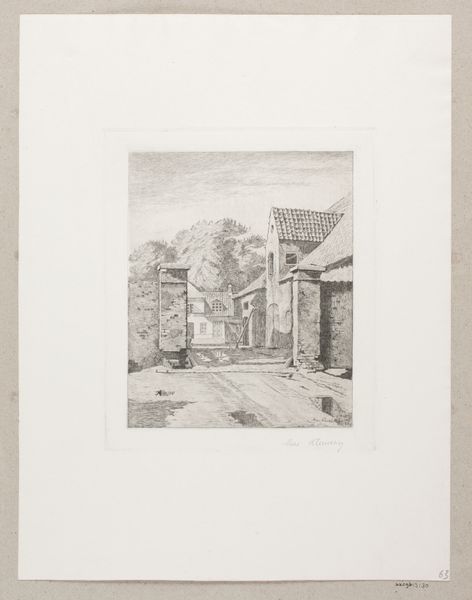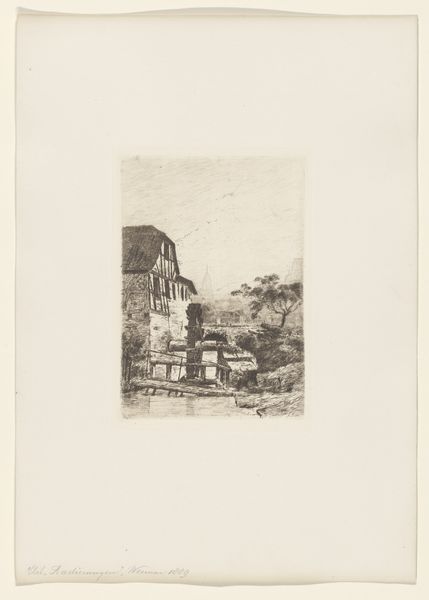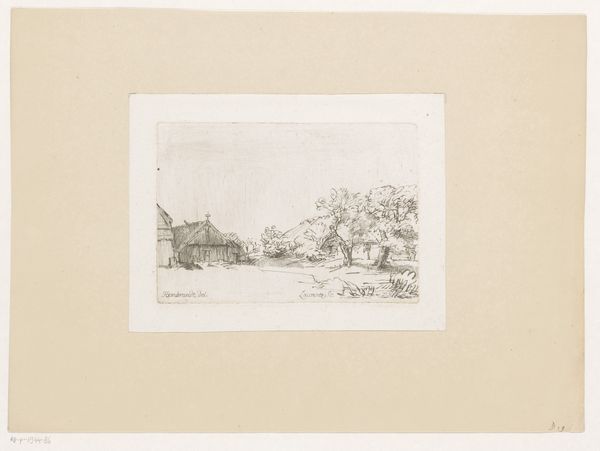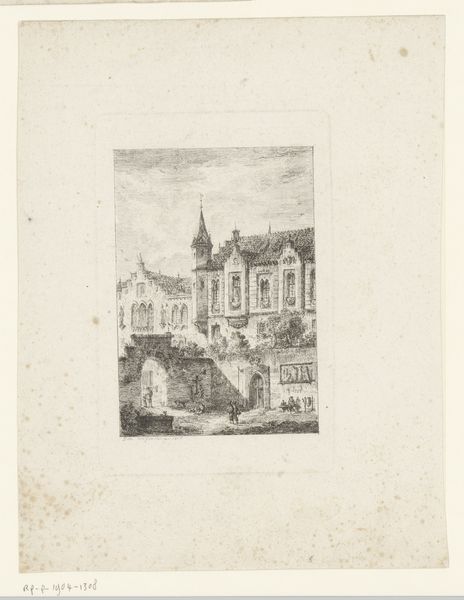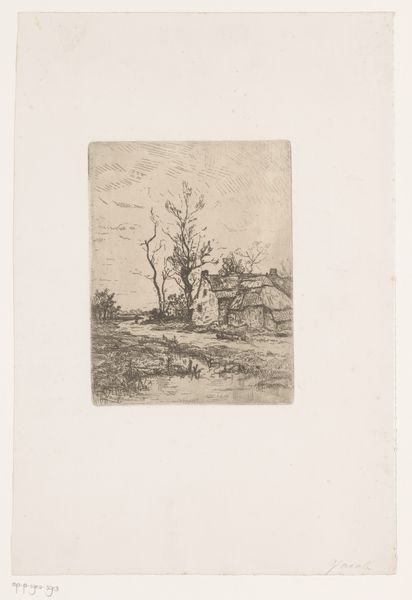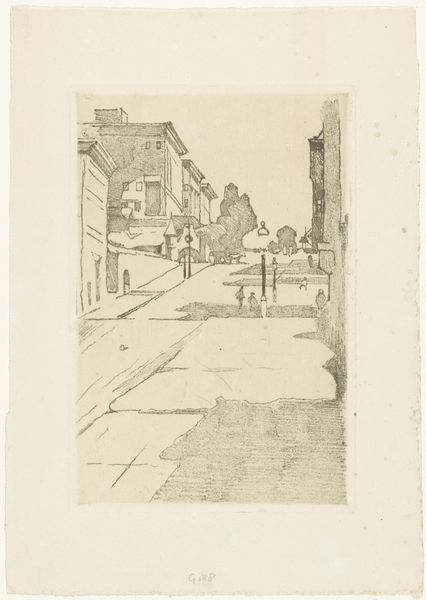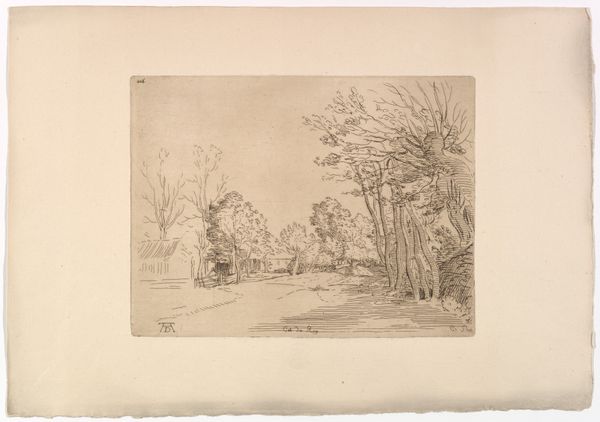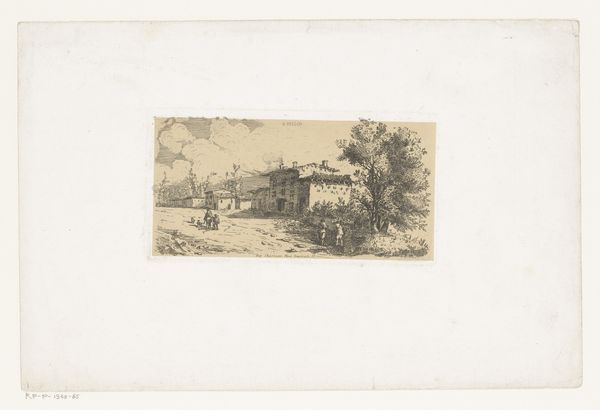
Gezicht op de Boulevard du Temple in Parijs met geheel links het Théâtre Lyrique 1859 - 1860
0:00
0:00
Dimensions: height 229 mm, width 157 mm
Copyright: Rijks Museum: Open Domain
Curator: I’m immediately drawn to the delicacy of the line work in this print. It’s like capturing a moment in time, the way a fly buzzes. Editor: This etching, created between 1859 and 1860 by Léopold Flameng, depicts a view of the Boulevard du Temple in Paris, featuring the Théâtre Lyrique on the left. What is it that strikes you about that "buzzz," exactly? Curator: There’s something almost ghostly about it, you know? Like peering into a faded photograph from someone else's life. All those tiny figures scurrying about their business, just trying to make rent, chasing the new fashionable styles—or avoiding catching the plague. It feels bittersweet. Editor: The medium of etching itself contributes to that effect. The fine lines create a sense of transience, mirroring the fleeting nature of urban life. Beyond the hustle, however, I find symbols of prosperity and public life intertwined: the opera, the modern Haussmann architecture... They say Boulevard du Temple was once known as "Boulevard du Crime," home to many sensational theatres that reenacted the lurid events reported by news media. I find the contrast thought provoking, how places change their meaning with time, just as they repeat motifs and symbols through different eras. Curator: Absolutely! There’s also a contrast for me, with the presence of those bare trees—winter must be coming. Are they planted specifically, or merely scrappy reminders of nature's presence, of something that stubbornly sticks to reality despite our modern dreams of self-expression. And if they are newly planted, there’s that hint of potential; the city’s reaching towards something still in its infancy. Editor: Considering that Haussmann’s renovations of Paris were well underway during this period, and Flameng clearly sought to capture them here, the planting of trees surely offered hope. This visual metaphor—city and forest coexisting—tells a story of rebirth amidst radical change. In a broader sense, it highlights an interesting duality, a theme as old as Paris: that every era can embody a sense of perpetual motion, ever seeking to escape its origins but never succeeding entirely. Curator: I love that. So, is this just a snapshot or is Flameng capturing an entire historical heartbeat? I get the sense he wanted his etched line to mirror the rhythms of his time. A tough assignment, for even the most masterful of chroniclers! Editor: Yes. When seen as more than a depiction of urban modernity, the print becomes an inquiry: Does the past inevitably persist beneath the surface, in our memories, informing our present? It surely does.
Comments
No comments
Be the first to comment and join the conversation on the ultimate creative platform.
